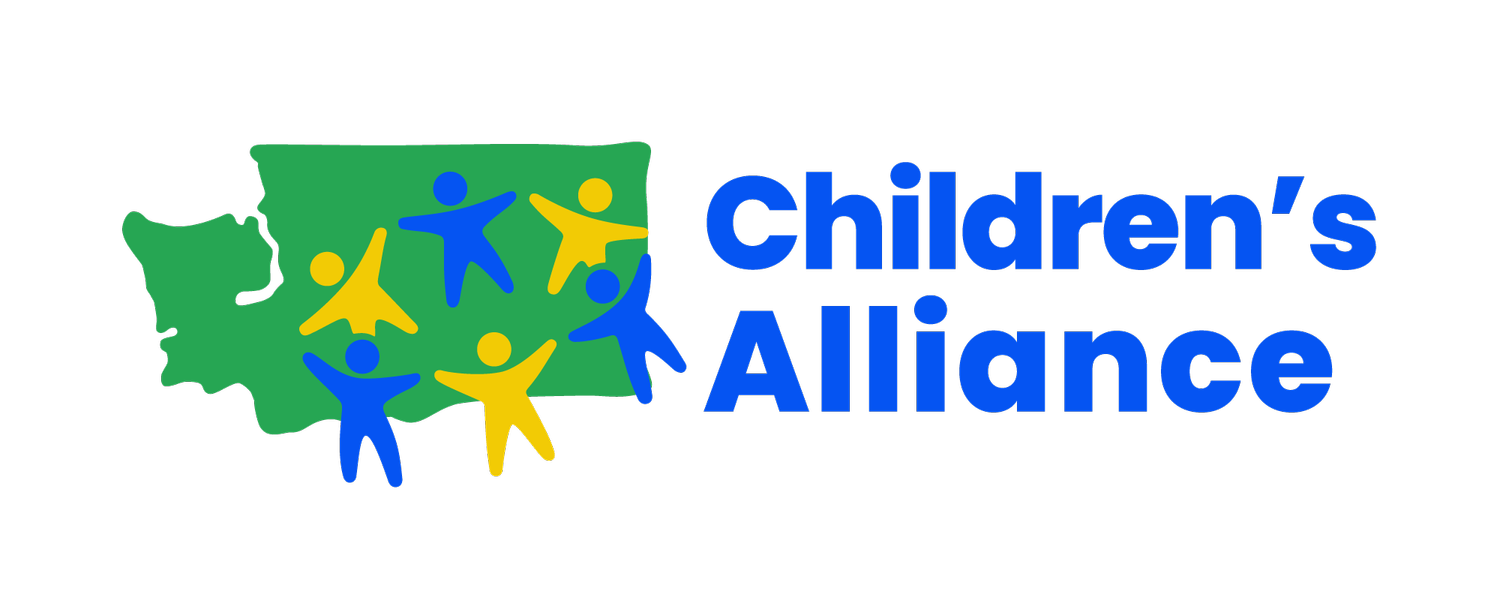INTRODUCING OUR NEW KIDS COUNT® DATA PROJECT: ELEVATING THE NEEDS OF WASHINGTON’S CHILDREN AND FAMILIES
At Children’s Alliance, our mission is to place racial justice at the heart of Washington’s laws and budget priorities so that every child can thrive. We believe that every child—regardless of race, ZIP code, or income—deserves the opportunity to grow up healthy, supported, and thriving. To achieve this vision, we must first understand the realities children and families face in their communities. That’s why we’re proud to introduce our new state and county-level data project, drawing from the Annie E. Casey Foundation’s KIDS COUNT® initiative.
This data project centers on three core policy areas that guide our work: early learning and child care, health equity, and economic justice. These interconnected domains shape the experiences and outcomes of children across Washington state. As part of this project, we are releasing a series of two-page issue briefs—each focused on an indicator related to one of these key areas. By providing accessible data—disaggregated by race and county where possible—we aim to equip advocates, policymakers, and community leaders with the information they need to pursue equitable, impactful change.
What Are Data Indicators?
To make meaningful progress, we need to measure where we stand. That’s where data indicators come in. Indicators are specific, measurable pieces of information—such as the percentage of children enrolled in preschool, the rate of uninsured children, or the number of families living below the poverty line—that help paint a clearer picture of child well-being. When disaggregated by race, geography, or income level, these indicators can expose disparities and help us better target solutions.
Spotlight: Early Learning and Child Care
We’re excited to share that the first set of state issue briefs focuses on early learning and child care. These indicators explore child care provider rates, the number of young children (ages 3-4) not in school, and other critical factors that affect families with young children. This data offers insight into how the early learning landscape in Washington is serving—or failing to serve—communities of color, rural areas, and families with middle and low incomes.
Early learning is foundational to lifelong success. By highlighting gaps in participation, affordability, and other specific indicators, we hope to elevate the urgent need for policies that support equitable early care and education for all Washington families.
What’s Next?
In the coming weeks, we will release additional issue briefs focused on our two other policy areas: health equity and economic justice. These upcoming releases will explore indicators like participation in the Basic Food program, median family income, and percentage of 10th graders who considered suicide. Together, these issue briefs will offer a comprehensive look at the challenges and opportunities facing children across the state.
Why This Matters
Our goal in sharing this data is not just to inform—it’s to inspire action. With this project, we’re giving advocates, lawmakers, and community partners the tools they need to better understand, describe, and address the current state of children and families in Washington. Data should not just sit in spreadsheets; it should spark conversation, policy innovation, and community-driven solutions.
We invite you to explore the early learning and child care indicators on our website—and stay tuned as we release the next sets of data. Together, we can build a Washington where every child has the chance to thrive.
To learn more and view the data, click the links below:
To learn more about KIDS COUNT in Washington, click here.
KIDS COUNT® is a registered trademark of The Annie E. Casey Foundation., Inc., and is used with permission of the Foundation.
